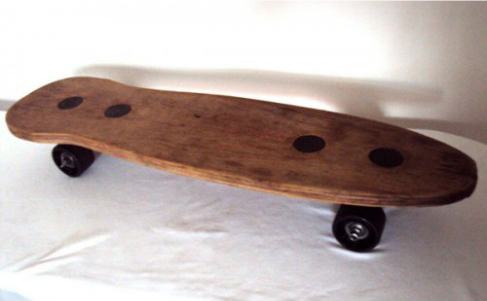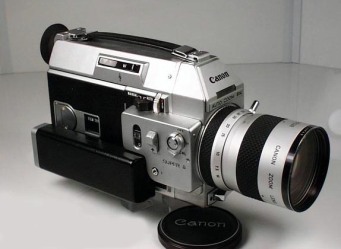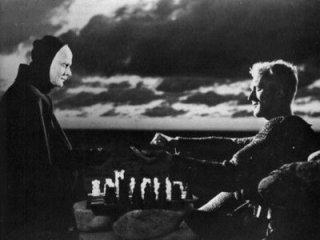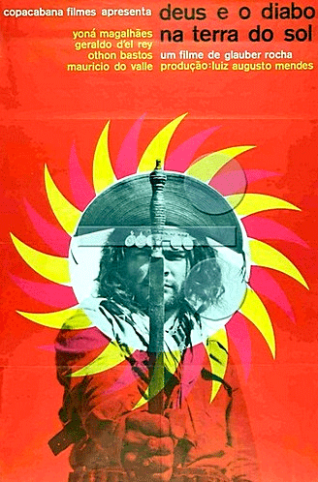Lost Samba, Chapter 10/01 – Super-8 and puberty in Rio de Janeiro
Avi’s dad, Daniel, was not as lucky as mine with the stock market crash. Their family had lost a lot and perhaps because of this they lived in a small, stuffy, apartment in Copacabana. Avi’s dad was in his mid-forties and behind his rather harsh-looking features, thick moustache and cold blue eyes hid a very likeable personality. Although I was as skinny as a stick insect, he considered me a healthy influence for his chubby son. Daniel thought my pastimes were the right ones, namely that I enjoyed playing football and body surfing instead of spending the day watching television and eating sweets. Therefore my friendship with Avi was supposed to be a sporty one, and on weekends, either he would come with me to the club or we would do outdoorsy activities with his dad. The choices were walks in the Tijuca forest and picnics on faraway beaches. In the afternoons, as a compensation for the exertions of earlier in the day, we would end up in one of the several funfairs that were constantly opening up or closing down all across the Zona Sul.
After we discovered skateboards, our favourite place became the Aterro do Flamengo, a park designed by Roberto Burle Marx, Brazil’s leading landscape architect. The authorities had constructed the park on land reclaimed from the sea alongside the Guanabara Bay as a gesture to compensate Rio for losing its status of national capital. However, despite the gigantic cost, what Rio ended up with was a monumentally boring place. The “attractions” included a museum of modern art that never seemed to have any significant work on display, an area to fly model airplanes, a pond for model boats, a memorial for the Brazilian servicemen killed in World War II, playgrounds for toddlers, an old airplane for people who had never been in one before and a promenade alongside the bay. Despite this, the Aterro was a good place for beginner skateboarders like ourselves: the pathways were made of smooth cement and there were several easy ramps.
Neither Avi nor I, ever came close in terms of skateboarding skills to those of the gang who hung out on my street, let alone those of the Californians who performed impressive moves in empty swimming pools and whose photos we saw in Skateboarder magazine. In fact, we sucked. Like geeks trying to look the part, both of us had the same board, the Brazilian-made Torlay, a rigid piece of wood with two very un-cool pairs of black rubber wheels stuck under it. They broke all the time and looked embarrassing next to the imported ones with colourful semi-transparent polyurethane wheels and flexible, fiberglass boards that the cool kids used.
One morning, Avi’s dad took out a Super 8 camera to film our awkward performances. I had never seen such a camera before and, noticing my curiosity, Daniel asked if I wanted to try it out. He handed over the small, futuristic, box and explained how it worked. I gave it a go and managed to capture Avi going down the slope. When I played back the footage in the visor, I had something close to a revelation. That device for capturing time, full of control buttons and with intricate futuristic leds blimping on its lens was simply too awesome for words and for weeks I could think of nothing else. For me, this was state of the art technology, almost the same as the cameras used to make 007 films, John Wayne westerns and other movies that I loved so much.
I was so mesmerized that I asked for a Super 8 camera and a projector as my Bar Mitzvah present, a heavenly wish Jewish parents simply could not refuse, as long as it was within reason. After I got the equipment, the obsession continued; I filmed just about anything on every opportunity. After getting the films developed in the shop, I rounded up my friends and family to show the results in the darkness of my room. The débuts were big occasions and before them, I carefully edited the shots with a slicer, stuck the bits together with special glue and reviewed the cuts in a precarious retro-projector. My room smelled of chemical glue and there were filmstrips hanging everywhere but, as they say in Brazil, I was as happy as a chick in a garbage can.
This interest took a new dimension during a family trip to Bariloche, a resort high in the Argentine Andes with a European atmosphere that gave Brazilian visitors – as well as Nazis in hiding – the illusion of being in the Old Continent.
One day, we went on a boat excursion to an island in the middle of the huge Nahuel Huapi Lake, a beautiful place that had inspired Walt Disney’s artists for the backgrounds in the movie “Bambi”. The journey soon became boring. Being unable to stand the forced jokes and talks about my future, I went outside to throw bread to the seagulls that raced alongside the boat. About a half an hour later, Dad came out seemingly to interrupt the fun, but instead of bothering me again, Dad told me that he wanted to introduce me to a man he had just met who happened to be a documentary director. Bill was British and was in Latin America to make a film for the BBC about an explorer who in the nineteenth century had travelled on horseback all the way from Argentina to the United States. For me, this was the coolest thing someone could ever do – travelling to shoot a film, not the horse ride – and I decided there and then this was what I wanted to do when I grew up.
Back at home, I started using my Super-8 camera to make silent movies with my friends and took a course in which I ended up directing a short film. The workshop’s organizers liked the end result and took it to several Latin American youth festivals. The film’s name was “Cheque Matte” and the script blended two stories: one of a man playing chess with someone the viewer never saw, and the other a romance of this same character with a female mannequin that he had stolen from a shop. At the end of the film, it turns out that the protagonist was playing against the plastic dummy and he throws the board into the air saying in a low melancholic voice “My life was a game of chess.” As any other trendy film director of time, I will never know the true meaning of my film. Years later, I was flattered to learn that an Ingmar Bergman film, The Seventh Seal, had a similar plot.
My teachers considered themselves as part of the Cinema Novo movement, Bossa Nova’s cinematographic – and more politicized – sibling. The people involved in it wished to move the Brazilian cinema away from the commercial studio system and discover the country from a different perspective. Following the neo-realist trends in Europe, these filmmakers focused on poor people, who until then had been portrayed in stereotypical and peripheral ways but now they were the central characters. The movement gained importance after their main exponents, Glauber Rocha and Nelson Pereira dos Santos, won international recognition at the Cannes festival in 1964.
As I entered into a more hormonal teen phase of life, my friends and I started to use the projector for a much less demanding style of film. Anyone with any knowledge of the subject will agree that the 1970s were the golden age of porn: the action was authentic and the quasi-amateur debauchery made kids like us go wild. With hundreds of clandestine Swedish Super 8 movies passing from newsstands to the back of our wardrobes, my projector became a rare and coveted piece of gear I happily traded for a few days with borrowed films. This secret activity was to be the beginning of the end of my never-fulfilled dream of becoming a film director. With no one to share my passion, the lack of any decent film courses and the absence of parental encouragement, my interest, although ever present in the back of my mind, slowly dissipated into the tropical psychosis.





